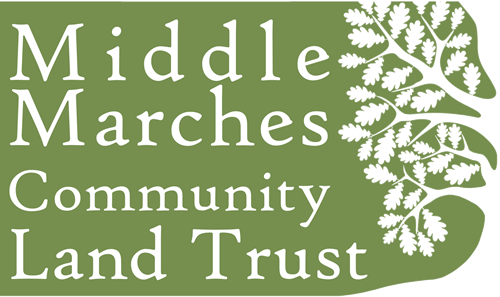Why I joined the Middle Marches Community Land Trust
Why did I join the Middle Marches Community Land Trust? By Andrew Wood
Well, my wife is one of the Trustees and I didn’t really feel I had any choice! Seriously? Yes. She’s my life partner and I try to support her in what she does. But there were more profound reasons.
We all know that we – the human race – face an existential crisis. Global biodiversity is threatened like never before. Changes in land use driven by urban development and industrialised farming; the widespread use of pesticides and herbicides; deforestation, soil erosion and ocean acidification; wildlife poaching and persecution.
All of these are driven by human activity. All of these contribute to local and global species extinction, loss of biomass and habitat. And all of these are exacerbated by and contribute to climate change.
Faced with such overwhelming threats, it is easy to feel powerless. What can I do as an individual? I know I can recycle more. Use less plastic. Switch to greater use of renewables. Eat less meat. Support wildlife charities here and in the wider world.
I do all that. But I still struggle to see tangible signs that I am making a difference to the enormous challenge that confronts us all.
And so I joined the Middle Marches Community Land Trust. I bought my share.
The Trust bought land and will protect it for nature. I will buy more shares! The clue is also in the title.
The Middle Marches is where I live, where we live. If we can’t try to make a difference here, then where can we? The organisation aspires to be a Community endeavour. Unlike the slogans of our politicians, we really are all in this together. A community response can do so much more than merely be the sum of the parts of our individual efforts. It is based on Trust. As a member, a shareholder, I trust that the Board and those actively working with them will do the right things for the rest of us in acquiring and managing land. That they will do a better job for biodiversity. It is, of course, the Land word that is the most important in the title.
Poor land use decisions and poor land management practices are driving our biodiversity crisis and are contributing to climate change. Better land use and land management can begin to put right some of the damage we have caused, however small the scale.
So I am hugely encouraged by the Trust’s purchase of Norbury Hill and by its plans for managing that and other sites.
More sympathetic land management can make at least three significant contributions to putting our world in a better place.
First, by reducing the numbers of livestock on our fields; by taking greater care of the soil under them; by reducing the quantity of agricultural inputs; and by planting more and more appropriate trees around them, we can tackle climate change by reducing methane emissions and storing more carbon.
Second, by creating and protecting wilder habitats – more woodland, where fallen wood is allowed to lie; hedgerows and verges cut less often and less severely, so that nesting birds are undisturbed and winter food for birds and small mammals is protected; and re-establishing species rich grasslands in field margins and meadows, so that the seed bank can flourish and “lost” species re-emerge – we can provide the conditions for threatened species to survive and for locally lost species to return.
Third, and to my way of thinking most importantly, by managing the right sites in these ways, we can play a part in creating greater connectivity in our landscape.
Connectivity is the holy grail of wildlife conservation. By allowing species to move between sites we give them an escape route from the worst impacts of climate change; we allow ecosystems to operate as they should; and we provide the conditions for genetic diversity.
John Lawton’s seminal report “Making Space for Nature” makes the case for connectivity better than I can and I encourage you all to read it. The Government’s 25 Year Plan for Nature embraces the concept. But it is local action that creates facts on the ground and that can make a real difference.
In a former life, as Executive Director for Science & Evidence in Natural England, I was instrumental in expanding the Lake District and Yorkshire Dales National Parks; in designating more than 40 Sites of Special Scientific Interest; in establishing our first network of Marine Conservation Zones; and in licensing the reintroduction of beavers to the English Landscape.
While I am proud of these achievements, I know that they mean nothing unless they are accompanied by local action, led by people who understand and care for their local landscape and the wildlife within it.
Contributions from our members and supporters do not necessarily reflect or represent the views of the Middle Marches Community Land Trust, its Board, or any of its Trustees. Contributors are sharing their own personal views and are solely responsible for the views they express.
